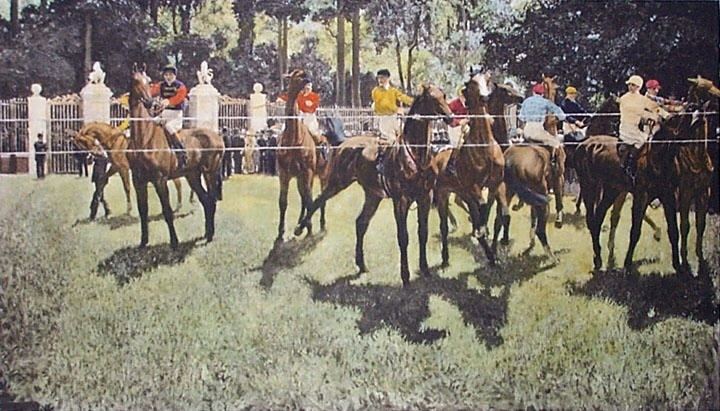 | ||
"Toe the line" is an idiomatic expression meaning either to conform to a rule or standard, or to stand poised at the starting line in a footrace. Other phrases which were once used in the early 1800s and have the same meaning were toe the mark and toe the plank.
Contents
Origins
The expression has disputed origins. Those suggested are from public school, the armed services, or possibly the British House of Commons.
School
It is common practice in many long-established schools for roll-call to be taken twice a day, at which the pupils line up with their toes exactly along a particular line on the floor, while their names are called out for them to respond to, indicating their presence.
House of Commons
It is commonly and erroneously thought that its origins lie in the British House of Commons where sword-strapped members were instructed to stand behind lines that were two sword-lengths apart from their political rivals in order to restore decorum. However, there is no record of a time when Members of Parliament were allowed to bring swords into the Chamber. Historically, only the Serjeant at Arms carries a sword as a symbol of his role in Parliament. There are loops of pink ribbon in the Members' cloakroom for MPs to hang up their swords before entering the Chamber to this very day as a result of this rule. In fact, there were not any lines in the Chamber in the days that gentlemen carried swords.
Armed services
The most likely origin of the term goes back to the wooden decked ships of the Royal Navy during the late 17th or early 18th century. Barefooted seamen had to stand at attention for inspection and had to line up on deck along the seams of the wooden planks, hence to "toe the line". The first mention of this use in literature stems from a story about navy life widely published in 1831 and written by Captain Basil Hall RN. Hall served in the Royal Navy from 1802.
On some military parade-grounds there are white lines marked, along which soldiers form up, with their toes just touching the line.
Boundary line
A slightly different use of the term was found in an 1816 magazine, which stated, The Thalweg of the Rhine shall toe the line of separation between France and the German States; .... The meaning in this context was marked the line of separation.
An earlier 1813 publication had used the term toe the mark which had the same meaning as toe the line's modern usage, where the author wrote He began to think it was high time to toe the mark. An 1828 publication also used toe the plank with a similar meaning.
Other suggested origins
Over the years the term has been attributed to sports, including toeing the starting line in track events and toeing a center line in boxing, where boxers were instructed to line up on either side of to start a match. However, the earlier boxing term was toeing the scratch, referring to a scratch mark on the floor. One of the earliest references related to an English prize fight in 1840.
Byan Shaw's painting Toeing the Line, depicting a scene at Ascot, alludes to it being a term used in horse racing.
Misspelling as "tow the line"
"Toe the line" is often misspelled "tow the line", substituting a familiar verb "tow" for the homophonic but unfamiliar verbal use of "toe." "Tow" does not accord with any of the proposed etymologies, so "tow the line" is a linguistic eggcorn.
Modern usage
Its modern-day use includes the context of partisan or factional politics, as in, "He's toeing the party line," the context of athletics where it describes runners poised at the starting line, and in the context of behavior where the miscreant is expected to "toe the line." The first published use in a political context was in March 1826, where Willie Mangum of the United States House of Representatives proposed that "every member might 'toe the mark'." The behavioral use also stems from around that time.
The term continues to be used in the context of cross-country and track and field running, although sometimes also symbolically in bicycle races to be at your mark along the starting line before a race.
Besides its quite literal use in middle and long distance running, the term is still in literal use in the military, particularly the US Army. Some barracks have two solid lines, each approximately three inches wide and placed five feet apart, either taped or painted, running down the center of the entire length of their floor. The soldiers are ordered to "toe the line". At this command they cease their activities and line up with their toes on the line.
In 1946 the writer George Orwell explicitly disparaged the idiomatic use of the phrase as an example of "worn-out metaphors which have lost all evocative power and are merely used because they save people the trouble of inventing phrases for themselves."
